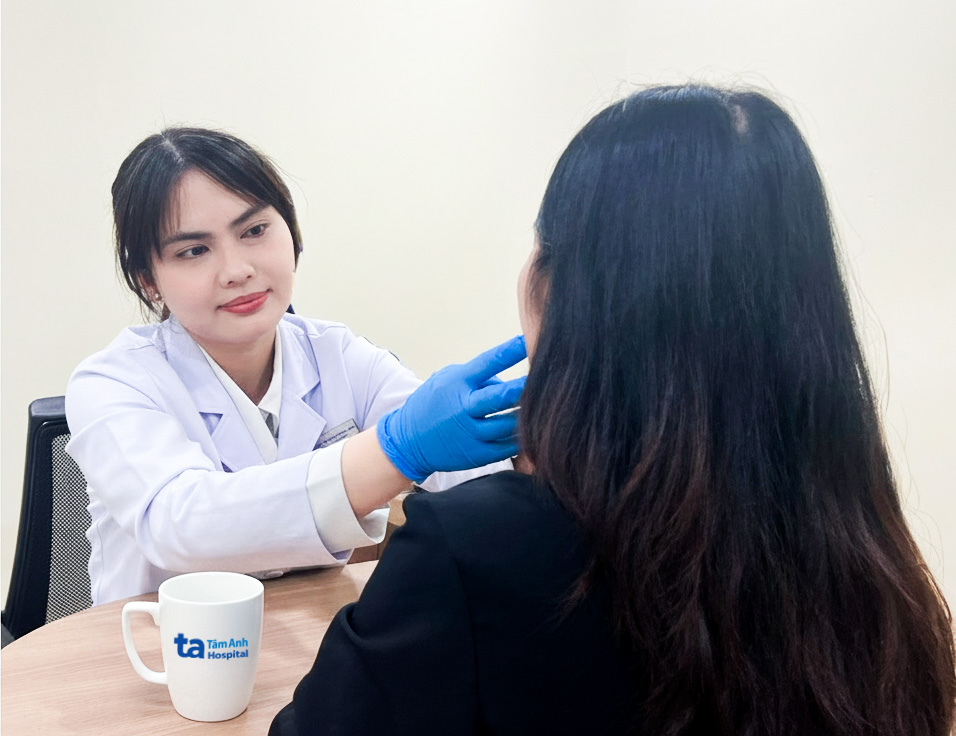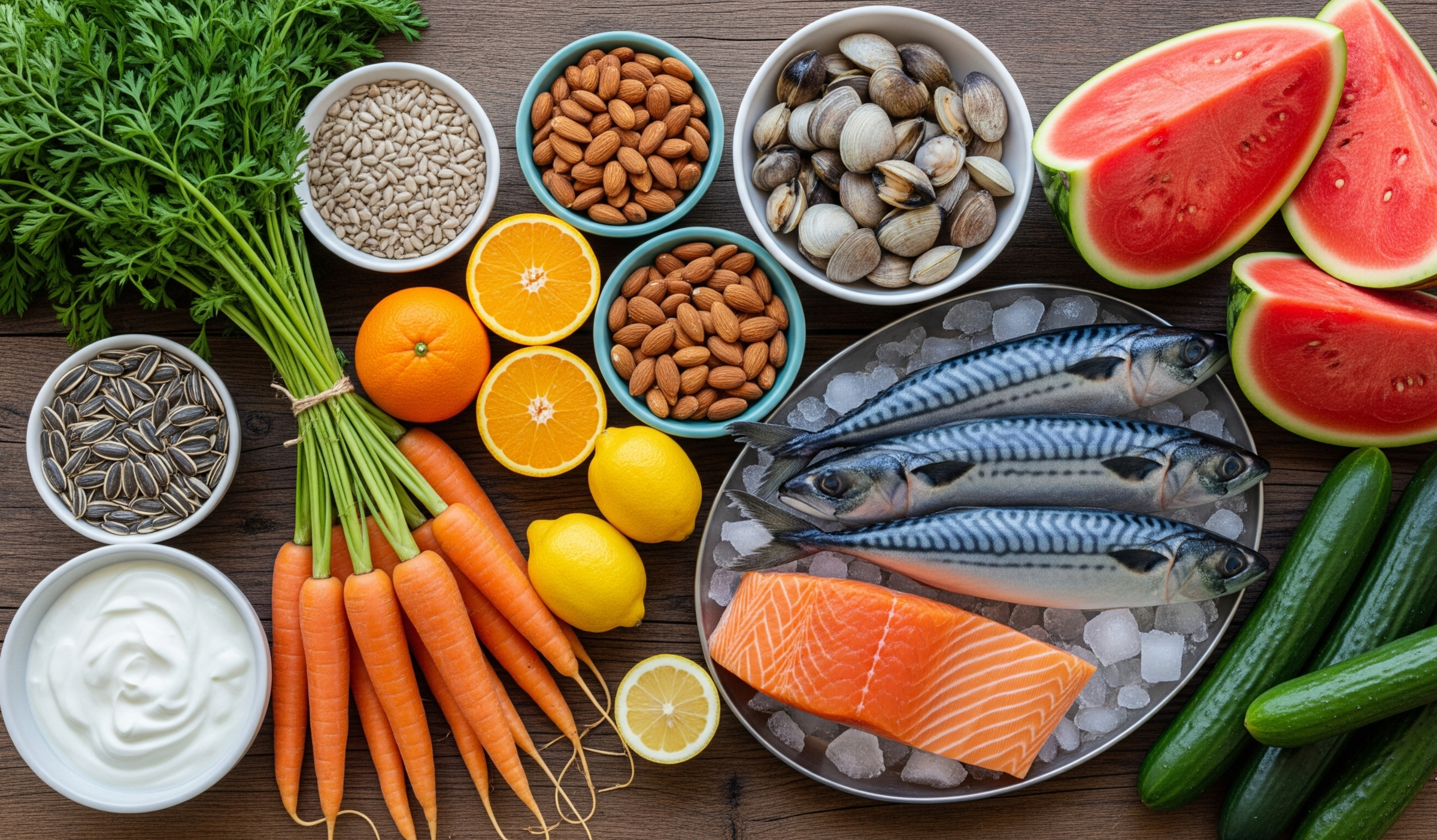Achieving radiant, smooth, blemish-free, and youthful skin requires attention to both external care and daily nutrition. Dr. Nguyen Ngoc Tran, a dermatologist at Tam Anh General Hospital in TP HCM, suggests seven food groups that can contribute to healthy, beautiful skin from the inside out, offering flexible combinations for daily meals.
Foods rich in beta-carotene and vitamin A
Beta-carotene (provitamin A) can protect skin from UV rays, reduce DNA damage, and enhance cell turnover. Vitamin A also supports balanced sebum production, preventing dry skin. Foods rich in vitamin A include carrots, sweet potatoes, pumpkin, spinach, kale, mangoes, and papayas.
 |
Dr. Tran examines a patient's skin. Illustrative photo: Tam Anh General Hospital |
Foods rich in vitamin C
Vitamin C plays a vital role in collagen synthesis, a crucial structural protein that keeps skin firm and elastic. This potent antioxidant also neutralizes free radicals, fades sunspots, aids post-acne recovery, and reduces redness. Foods rich in vitamin C include oranges, grapefruits, lemons, strawberries, kiwis, red bell peppers, broccoli, and kale.
Foods rich in vitamin E
Vitamin E protects cell membrane lipids from UV rays and pollution damage, while maintaining natural skin moisture, soothing dryness and itching, and reducing wrinkle formation. A daily diet including almonds, sunflower seeds, avocados, extra virgin olive oil, papaya, or wheat germ provides vitamin E.
 |
Foods rich in vitamins A, C, zinc, etc. promote healthy skin. Image generated by AI |
Foods rich in omega-3 fatty acids
Omega-3s help create a healthy lipid barrier, reduce transepidermal water loss, and limit peeling. The anti-inflammatory properties of omega-3s also reduce redness, inflammatory acne, and support inflammatory skin conditions like eczema or psoriasis. Salmon, mackerel, herring, sardines, flax seeds, chia seeds, and walnuts are rich in omega-3s.
Foods rich in zinc
Zinc plays a role in tissue regeneration and sebaceous gland regulation. Zinc deficiency can lead to slow wound healing, inflammatory acne, and dull skin. Foods rich in zinc include oysters, clams, lean beef, chicken, lentils, pumpkin seeds, and whole grains.
Foods rich in water and polyphenols
Adequate hydration keeps skin plump, while polyphenols can neutralize free radicals, reduce inflammation, and prevent premature aging. Foods rich in water and polyphenols include watermelon, cucumber, apples, oranges, green tea, purple grapes, blueberries, and raspberries.
Foods containing probiotics
Gut microbiota directly influences the gut-skin-brain axis. Probiotics help balance gut bacteria, reduce systemic inflammation, improve acne, atopic dermatitis, and even reduce rosacea flare-ups. Unsweetened yogurt, kimchi, sauerkraut, miso, and natto are rich probiotic sources.
Dr. Tran advises diversifying food groups in daily meals and using proper cooking methods to retain nutrients. Maintaining a healthy lifestyle with sufficient sleep, regular exercise, and stress management is also essential for healthy, vibrant skin.
Minh Huong












